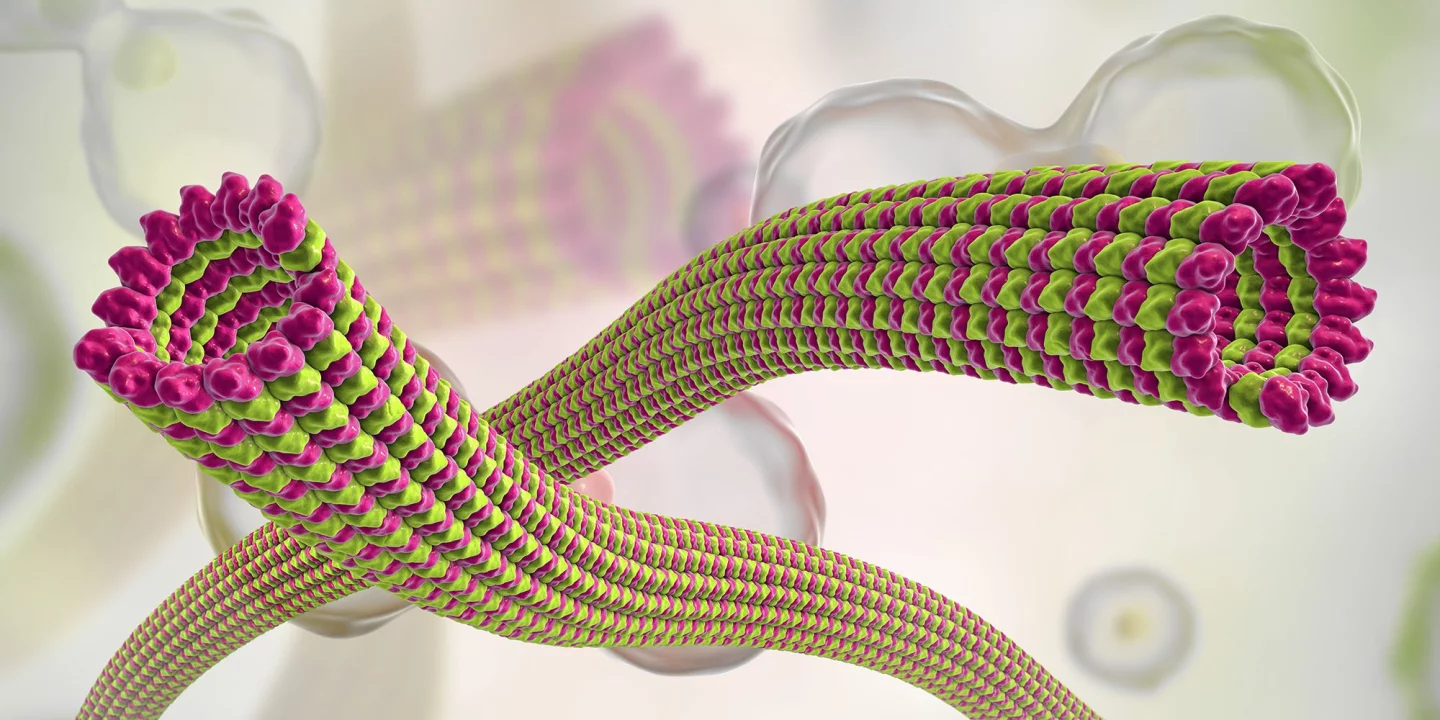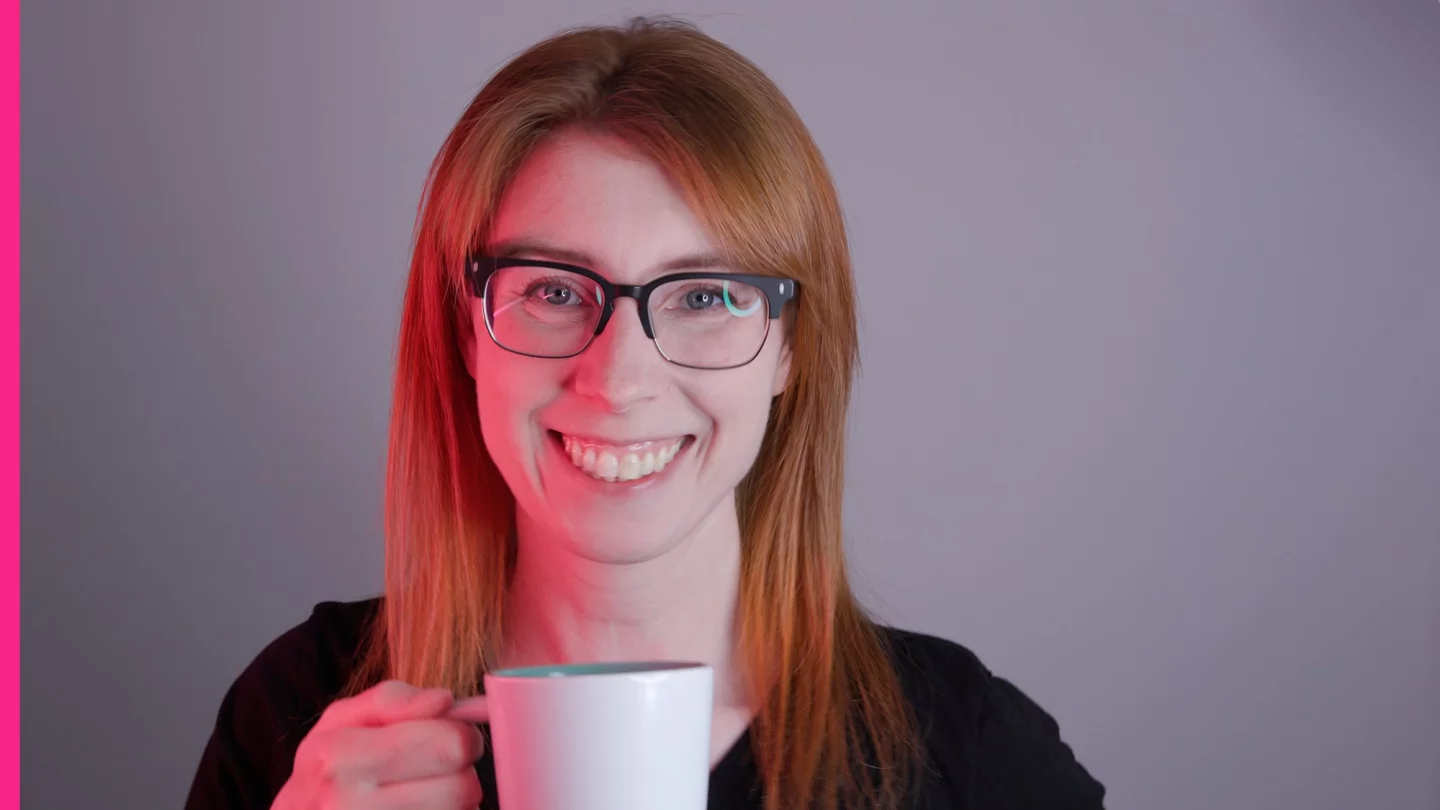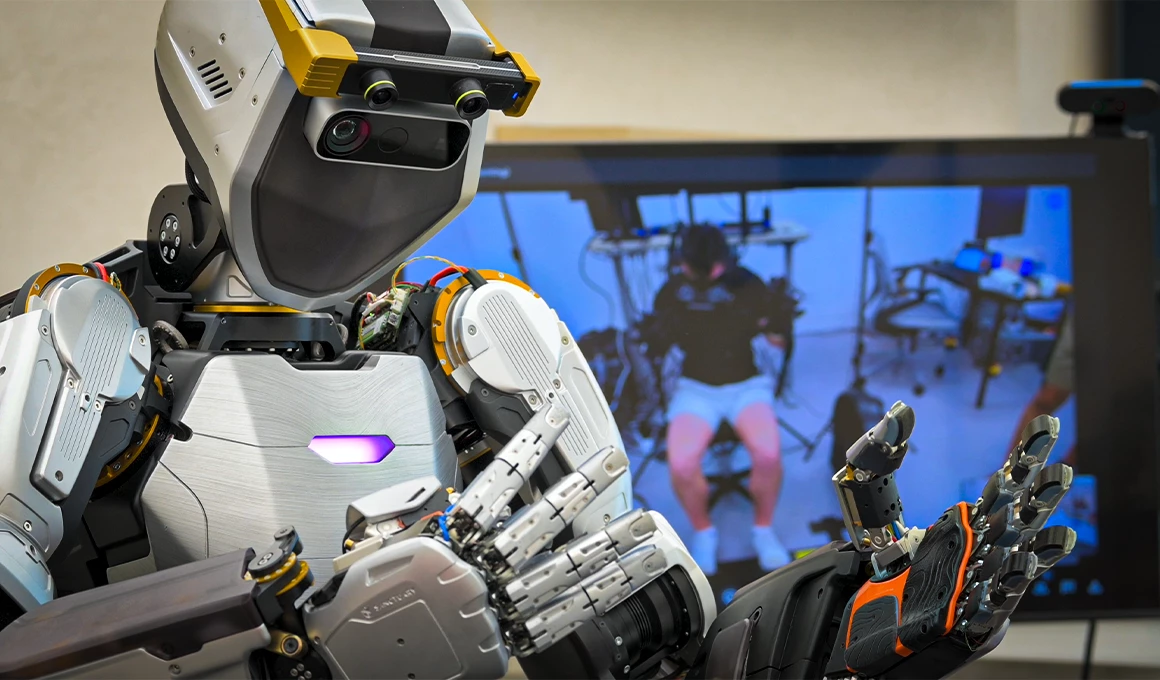As science wrestles with the thorny job of proving, defining and understanding human consciousness, one pioneering startup aims to apply cutting-edge theories of consciousness to AI models – and create the first sentient AI. This is wild stuff.
The last time we spoke to Suzanne Gildert, she was, as it turned out, just days away from leaving her former post as Co-Founder and CTO at Sanctuary AI, where she oversaw the development of the extraordinary Phoenix humanoid robot, one of the most advanced AI-driven robots in an exploding market.
This is one fascinating cat; Gildert holds a Ph.D from the University of Birmingham, UK, on the effects of superconductivity in quantum computers. She moved to Canada in 2010 to work for the world's first quantum computer company, D-Wave. By 2014, she had co-founded Kindred AI, an early Artificial General Intelligence (AGI) research lab focusing on training robots to learn by imitation. The Kindred AGI lab was spun off and sold for US$262 million in 2018, and Gildert immediately co-founded Sanctuary, staying long enough to get Phoenix working autonomously like this:
So she's been involved in some very early, frontier-level tech companies – but perhaps none earlier than her newest startup, Nirvanic Consciousness Technologies, which launched in 2024.
"If you're someone like me that wants to start something, like 10 years too early," she tells Puneet Seth, host of the North of Patient podcast in a fascinating interview published this week, "then you essentially have a green field of opportunity. No-one else is doing this yet, so ... you can [establish] a good IP position early on. I like to work at that really early, cutting-edge, way before you're trying to commercialize something, way before it's ready. You build a really strong foundation so that when that wave does start to come, you have a really strong position in the field."
Nirvanic, says Gildert, is focused on "bridging the gap between AI and consciousness, by building systems that harness quantum mechanics to simulate conscious-like behavior. It's not about creating consciousness for its own sake, but about using these principles to design better, more adaptive AI."
Quantum consciousness: A controversial theory
At this point, we start getting into some far-out thinking. Some would argue that the definitive statement on consciousness was written in 1637, when French philosopher and mathematician René Descartes penned the famous phrase "Cogito, ergo sum" – I think, therefore I am – in his book Discourse on Method.
Without a particularly robust definition of what consciousness even is, that's still about all we can say for sure; I'm pretty sure I'm sentient, I've got no idea about you lot.
But that doesn't mean science hasn't been trying, and one particularly fascinating idea, proposed by a Nobel Prize-winning physicist and an anesthesiologist in 1998, suggests that quantum effects could explain the ghost in the human machine, and might be the place where our consciousness and free will – the soul, you might say – reside, capable of perceiving the fractal possibilities stretching out into the future and choosing a path through them.

Roger Penrose's Nobel Prize might be for the prediction of black holes rather than neuroscience, but he's certainly a well-respected figure and a thoroughly remarkable man, as illustrated by the fact that he once saw an M.C. Escher exhibition, then came up with his own impossible "Penrose triangle," above, which he then sent to Escher, inspiring two of the artist's most famous works. For his part, Stuart Hameroff has certainly spent plenty of practical time dealing specifically with consciousness in the operating theater.
The (heavily disputed) Penrose-Hameroff theory is known as Orch OR, or Orchestrated objective reduction, and it proposes that consciousness doesn't arise from the electrical activity between neurons in the brain. This kind of "computable" processing, which could conceivably be carried out by a regular computer crunching complex algorithms, leaves little wiggle room for free will.
Instead, the pair proposes, perhaps there are structures in the brain that act more like quantum computers – that aren't fixed into a binary 0/1 position like a classical computer bit, but are instead able to hold a 'superposition' including vast numbers of possible states, all co-existing simultaneously together, like the qubits in quantum computers.

The theory proposes that tiny "microtubules" – tubular protein structures found within the cells of all plants, animals, fungi and many unicellular organisms – "may be ideal quantum computers," and that they could operate in networks using quantum entanglement as an instant means of communication.
In this (very confusing) model, consciousness is portrayed as "brain activities linked to fundamental ripples in spacetime geometry," and the outputs of these quantum networks effectively represent the collapse of the superpositions into a single outcome. Schrodinger's cat is revealed as either dead or just very quiet, a spectrum of future possibilities becomes a single path forward, and this nice, simple new reality can then interact with the binary synaptic machinery of the brain.
According to Penrose and Hameroff, consciousness and free will arise in the imagining of these many future states, and the 'choice' of which to collapse the superposition into, in a way that's "neither totally deterministic nor random, but influenced by a non-computable factor ingrained in fundamental spacetime."
As explained by international treasure Sabine Hossenfelder in the video above, the theory has recently been given somewhat of a boost with the discovery that microtubules can indeed exhibit quantum effects in biological systems – and they can do so at room temperature rather than close to absolute zero like what's required for many quantum qubits – and that this "superradiant" quantum effect isn't affected by environmental noise.
Make no mistake, it's still an extremely controversial theory with opponents across many disciplines. But it's interesting enough to Suzanne Gildert that it's central to what Nirvanic has been set up to pursue.
"I have a background in quantum computing, so I'm obviously predisposed to be interested in this," Gildert tells Seth. "But there are a growing number of scientists that are finding evidence of quantum effects in the human brain, and also a growing number of philosopher/scientists who have theories on how some of the odd properties of quantum mechanics could explain some of the properties of the human mind... That's what I'm trying to explore, both theoretically and practically, by trying to build a system whose mind computation works on a quantum computer rather than a classical computer, like AI does."

A working definition of consciousness
One of the first challenges for Nirvanic has been defining exactly what it is the company is shooting for. Gildert tells Seth there are plenty of different ideas out there about what consciousness actually means, but she's settled on a two-part definition focused on practical outcomes.
The first part of consciousness, she says, is the first-person experience, and the ability to focus that experience on different things through attention. "When I'm reading a book," she says, "I'm focusing my consciousness on the text, and I've forgotten about everything else that's going on around me. So that idea of having, like, a subjective experience... It seems like data is somehow loaded into an observer that then watches the movie playing out around you."
The second part is the ability to choose. "That movie that's playing out in the theater of your mind," she continues, "the information from that is now used to present options, or choices to you. The movie becomes a 'choose your own adventure' movie, it's interactive, like a video game... There's a sense, a feeling we have of having a choice, or choosing."

Nirvanic: The rubber hits the road for quantum consciousness theory
Today's AI models, Gildert tells Seth, do an excellent job of mimicking the unconscious processes of the human brain. "The way I think AI works," Gildert tells Seth, " is it just takes in data, it crunches that data mathematically, and it just outputs an action based on what it's seen before."
The human brain does this too, she goes on. Most of what we do all day is on some kind of unconscious, reflexive autopilot. When we start to learn to drive, or play the guitar, we devote huge amounts of attention to building the basics of these skills – but by the time we reach an expert level, we can nearly do it in our sleep, and our mind meanders around other things.
That's super useful – but it doesn't help you in an unfamiliar situation. "There's these two different buckets of operation," says Gildert, "one where it's unconscious, where you've seen lots of training data before, just like an AI. But what I think AI needs is a second mode where you're in an unfamiliar situation, something novel is happening that you've never experienced before. You become hyper aware, you become conscious of what's going on, and then you're able to make intuitive decisions about what to do."
So how will Nirvanic work toward a similar system? Initially, says Gildert, it'll be a matter of integrating quantum computers in with classical AIs. "You take in data through sensors," she tells Seth. "You take it from the classical realm, where it's zeroes and ones, and you turn it into quantum information. You then kind of massage or evolve that quantum state so that it comes up with different action options that the system could choose... And then the quantum system goes through something called collapse, or measurement."
"In quantum mechanics," she continues, "once you measure a system, or observe a system, it changes into a definite value. It kind of chooses which state to end up in. So you measure the quantum system, and it essentially chooses an action, and then you use that action to do something with your AI – if it's a robot, you actually execute that action in the real world. It could also be one of these browser control AI systems, where an AI literally takes control of your mouse and keyboard and it can click around and do things for you."

So assuming it all goes well, what would a 'conscious' AI of this nature even look like?
"The answer is, we don't know," she says. "In the best case scenario, within the next year to two years, we have big enough quantum computing systems, and we've come up with smart enough experiments to start seeing little signatures. By no means will we have a system that's anything like our own consciousness, but we might have something that shows a spark of conscious decision-making, that's making slightly better choices than its unconscious AI companion, right?"
"That's what I'm looking for at the moment, in these early scientific experiments – can you see a signature of a smart decision, or choice being made? You might ask, how do you even know it's made a smart decision? Well, if you think about an AI system before it's been trained at all, it'll choose actions at random, because it doesn't know anything. So what I think of as a smart decision is that the quantum system chooses an action that's slightly better than random, without having seen as much training data. That's what we're looking for– if it's learning faster, making slightly more intuitive, smarter decisions than what an AI would, with a lot less training data."
What else could AI consciousness do for humanity?
Beyond better-performing AIs and robotics, Gildert sees an important role for this research in terms of mental health. "Consciousness is basically who we are, it's what we experience every moment of the day," she tells Seth. "And what really is mental health? It's about how we're experiencing the world, how that makes us feel, and how there could be disorders associated with that."
Thus, she believes Nirvanic's work on artificial consciousness could make an impact on organic consciousness in two key ways. "One is in trying to understand ways in which we can improve people's conscious experience in the future," she says. Technological interventions for changing our state of mind that go beyond positive thinking and meditation.
The second, oddly enough, is about getting humanity away from screens again. "A lot of how we feel," she explains, "is all about the systems we interact with, whether they're other people or technology. We're interacting increasingly with technology over time, and I think things like how much time we spend staring at screens, our phones and social media is impacting our mental health. So maybe, by having machines that have more of a conscious component to them, we can re-humanize technology."
"You could say that sounds kind of dystopian," she continues, "but it's a choice among options, right? You could just say we have to stop interacting with technology, or you could say we have to start re-humanizing the technology we're interacting with."
From here, the discussion carries on into even wilder futurism, around the transferring of consciousness between organic and manufactured substrates. Then it goes back to where this quest began for Gildert, in her own struggles to overcome major anxiety disorder and panic attacks, and runs up against the edges of spirituality as she speaks of how meditation training gave her an intuitive sense of consciousness as something beyond the binary capabilities of computers.
It's a terrific conversation, and you can catch it uncut in the video below. Meanwhile, I hope you've enjoyed this glimpse into a truly pioneering initiative at its earliest stages. Certainly, there's a dozen Black Mirror episodes in everything she's talking about here, but in an age where technology is rapidly becoming impossible to tell apart from magic, I find it fascinating to see how these frontier projects plunge scientists deep into philosophical and spiritual territory.
Source: Nirvanic Consciousness Technologies via North of Patient








